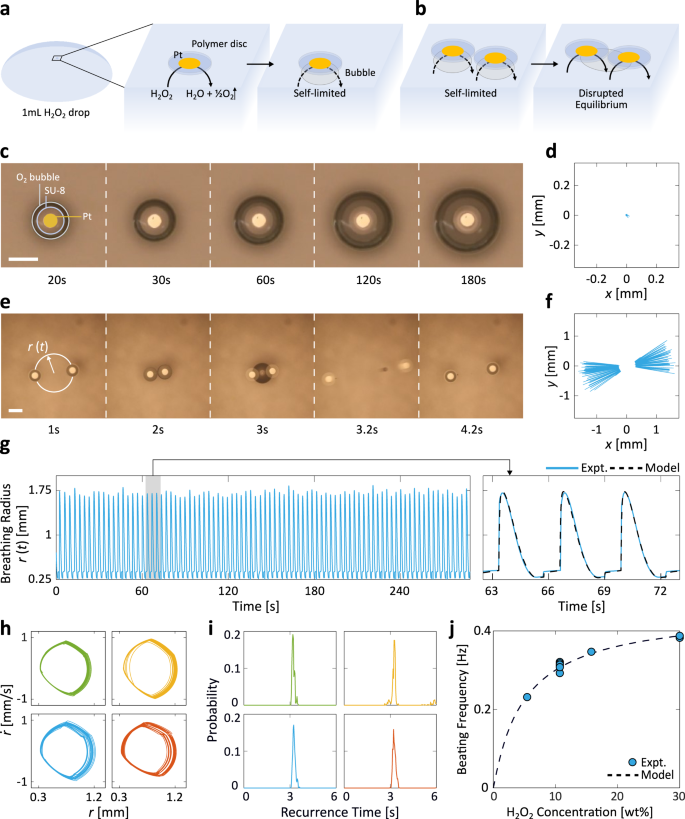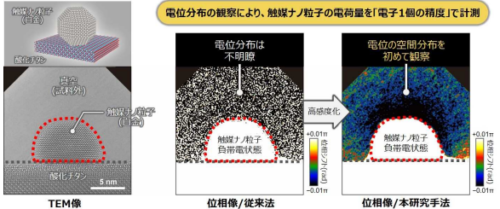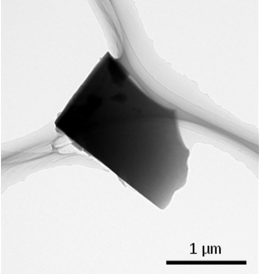化学物質の泡を弾くことでマイクロロボットの腕の動きを動力化することができる Popping chemical bubbles can power arm movements in microrobots
2022-10-13 ノースウェスタン大学
研究チームはまず、過酸化水素水滴の上に一対の活性微粒子を置いて、その相互作用で振動子をつくった。しかし、これは、化学反応性が大きく異なる粒子同士を組み合わせた場合に限られた。研究チームは、この「非対称性が引き起こす秩序」を理解するために、熱力学の新しい理論を開発し、この系や他の多くの系でこのような挙動が出現することを説明した。
非対称性が自発的な秩序ある運動を生み出すのにも有効であることを発見した研究チームは、その理論を小さなロボットアームで試してみた。より反応性の高い粒子を導入して対称性を崩し、さらに標準粒子を追加することで、マイクロロボットの腕に一貫した周期的な動きを作り出すことができることを発見したのである。
<関連情報>
- https://news.northwestern.edu/stories/2022/10/chemistry-flexes-microrobotic-arm/
- https://www.nature.com/articles/s41467-022-33396-5
非対称性誘起秩序によるマイクロロボット振動子の創発 Emergent microrobotic oscillators via asymmetry-induced order
Jing Fan Yang,Thomas A. Berrueta,Allan M. Brooks,Albert Tianxiang Liu,Ge Zhang,David Gonzalez-Medrano,Sungyun Yang,Volodymyr B. Koman,Pavel Chvykov,Lexy N. LeMar,Marc Z. Miskin,Todd D. Murphey & Michael S. Strano
Nature Communications Published:13 October 2022
DOI:https://doi.org/10.1038/s41467-022-33396-5

Abstract
Spontaneous oscillations on the order of several hertz are the drivers of many crucial processes in nature. From bacterial swimming to mammal gaits, converting static energy inputs into slowly oscillating power is key to the autonomy of organisms across scales. However, the fabrication of slow micrometre-scale oscillators remains a major roadblock towards fully-autonomous microrobots. Here, we study a low-frequency oscillator that emerges from a collective of active microparticles at the air-liquid interface of a hydrogen peroxide drop. Their interactions transduce ambient chemical energy into periodic mechanical motion and on-board electrical currents. Surprisingly, these oscillations persist at larger ensemble sizes only when a particle with modified reactivity is added to intentionally break permutation symmetry. We explain such emergent order through the discovery of a thermodynamic mechanism for asymmetry-induced order. The on-board power harvested from the stabilised oscillations enables the use of electronic components, which we demonstrate by cyclically and synchronously driving a microrobotic arm. This work highlights a new strategy for achieving low-frequency oscillations at the microscale, paving the way for future microrobotic autonomy.



